Latest IMOCA 60 hardware part 2
Read part one of this article here
Jean-Pierre Dick’s new new IMOCA 60 Virbac Paprec 3 was once again created by a team including the designers, Dick himself, sail maker Laurent Delage and CFD/engineers such as BMW Oracle Racing’s Mick Kermerec. Technical Director, who managed the project was once again Nicolas Abiven.
Abiven points out that structurally their new boat is a big step on from the Safran and Groupe Bel generation but reckons Virbac Paprec 3’s underwater profile is similar to that of Foncia. The boat was built at Cooksons in female moulds using low temperature curing prepreg with a lot more focus on weight saving than on their previous boats. “Basically we kept the same number of hours for the building, so we just removed some hours from the fairing and put it into the mould building,” recalls Abiven of why Cookson built using female tooling.
Abiven confirms that the new boat is substantially lighter than the previous two Virpac Paprecs, which have both been Farr designs. As to the input skipper Jean-Pierre Dick had, Abiven says that it was his preference to go with the lightweight fixed rig and also the design of the cabintop. For here there is another significant difference between the new VPLP-Verdiers: Virbac Paprec 3 has twin doghouses with lines running above deck in between – an arrangement that we first saw on the last generation Finot-designed Hugo Boss (and on the latest Hugo Boss). In comparison, Foncia once again has a giant sliding hatch, pretty much enclosing all the working area of the cockpit, while PRB has a fixed single cabintop but with a cuddy on each side with a forward-facing window.
“The specification was to make something really light,” says Nicolas Abiven for the reasoning behind the cabin top choice for Virbac Paprec 3. “We wanted all the lines to go straight and to avoid any deviation blocks and Jean-Pierre wanted to steer in a protected area and see everything from there. So when we put all these specifications together we came quite naturally to the two pods. What is true is that it is a bit less protected but Jean-Pierre is not really concerned by that.” While the doghouses look very protected, apparently quite a lot of water and spray gets sucked into them from behind. Then of course there is the deluge of water that funnels down between the pods...
“It is true is that you are definitely obliged to be in your drysuit when you are on deck,” advises Abiven. “But that is okay.”
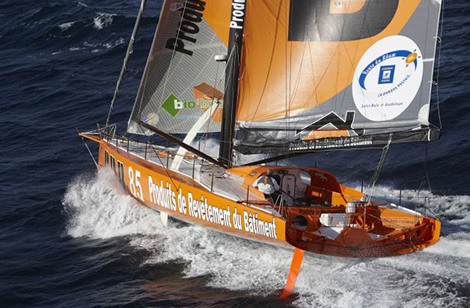
With PRB the principle aim was similar to that of Virbac Paprec 3, according to the team’s Pierre Louis Pillot, in that their principle objective was lightweight, while trying to create a boat that was easy to sail following skipper Vincent Riou’s experience in his two previous IMOCA 60s. “We have tried on the inside to make it as light as we can and we have nothing inside.”
PRB’s boat captain Eric Carret points out that the sole aim of their boat is the Vendee Globe. “The idea is to have a boat for one man, so a smaller cockpit and you can do everything from the cockpit and you have the cabintop fixed and you can stay there and steer easily. That is the difference between this and the old one – the old one had a very large cockpit and was good for crewed racing but was too large for one man, so we decided to have a small one.”
And of their forward looking window either side of the cabin top Carret adds: “When he decided to built a new boat, the first thing Vincent wanted was to be able to steer and be able to look upwind and downwind and at the sails without getting wet. He doesn’t like to be wet.”
As mentioned Virbac Paprec has curved asymmetric daggerboards. Compared to the first generation of this arrangement on Marc Guillemot’s Safran, her boards are a similar shape, possibly a little more curved, but significantly they are located further outboard where they are able to generate more righting moment.
They have a similar arrangement on PRB and Pillot says you get a slight sensation from the curved boards when you are steering, but not that much. Being curved one might think they might make more leeway [than straight asymmetric boards] when the keel is canted, but Carret says this isn’t the case because the foils are still long and deep.
On the choice of a fixed rig for Virbac-Paprec 3, Abiven says that the decision to go down this route was based on statistics – a lot of rigs fell down on the previous generation of IMOCA 60s, and more were wingmasts than fixed. “Also these kind of boats that are fast, but not as fast as multihulls where the wingmast is really necessary.”
The PRB team obviously disagree. For their new boat they have built two wingmasts, one similar to that fitted to Safran and another which was used for the Route du Rhum, chosen because it has a lower centre of gravity. The tubes were manufactured by JMV Industries in Cherbourg and finished by CDK in Port la Foret.
As mentioned the PRB rig has deck spreaders however the evolution of these appears has gone full circle – Aquitaine Innovations, the first boat to fit them 15 years ago, had her protruding from the mast step, while subsequent iterations have seen their attachment point to the boat, slipping further down the cabintop. However on the new PRB they have returned to the mast step, the idea being that if they are mounted elsewhere then it would require extra structure to be added to that area and this would mean more weight.
On PRB they have also moved on from PBO standing rigging to carbon – theirs coming from Swiss company Carbo-Link, who made the many miles of carbon fibre cabling for Alinghi5 – with the exception of the headsail which remains in PBO as are the runners.
All three boats have now dispensed with the MichDes C-shaped track used for the mainsheet, vang and as a means of preventing the main from accidentally gybing, as we saw on both Desjoyeaux’s Vendee Globe winners. Instead all have a shorter (and thus lighter) elliptical track, however the difference is that on for example PRB, the sheet attached a long way forward along the boom with the result it doubles as a vang. Foncia of course differs – her track is for what is effectively the vang and there is a separate mainsheet running to blocks on the transom.
According to Virbac Paprec’s Nicolas Abiven the C-shaped track “adds complexity and we’ve gained something like 30% average speed so today the angles are a bit tighter, so it is very rare that we have the boom out of the centre of the boat. We don’t feel it is interesting to have anything like that and it was a good way to save weight and windage.”
All the boats obviously have a canting keel. On PRB, the canting angle is 40deg, which we understand is the same as on their previous Farr design.
While before canting keel IMOCA 60s typically had two rams for the sake of redundancy, now all are fitted with one, yet again for weight reasons. Canting time tack to tack is typically around 10 seconds, although this isn’t as important on IMOCA 60s which are typically sailed shorthanded, compared to say VO70s or inshore boats. On PRB the ram is made by Cariboni.
Differences still remain with the fabrication of the canting keel foil. With Foncia for example Mich Desjoyeax elected to go for a more expensive, lightweight but more draggy carbon fibre foil whereas the other two both have steel foils.
“We didn’t want to go for carbon because it is a bit too expensive and the reliability of keel fins is a very tricky subject,” admits Abiven. “Carbon, if it is well done, can be very reliable, but if it isn’t, it can be a nightmare. We are close to a carbon keel fin weight, maybe 15kg more.” Again this is an area of some secrecy on Virbac Paprec 3. The fin was built in a steel with a very high modulus, but despite this it was still half the price of the carbon alternative, says Abiven.
For simplicity and lightweight the keel has the only hydraulics on board Virbac Paprec 3. While they have locks on halyards, the downhauls are all handled on blocks and tackle arrangements, again representing a weight saving. This is also the case with PRB.
In terms of sails, again there is variation between the three boats. Abiven believes PRB only carries masthead kites and gennikers, whereas Virbac Paprec 3 has a mix of masthead and fractional, although one imagines this varies from race to race (round the world you are more likely to take some fractionals for the Southern Ocean).
With the twin cabintops, down below on Virbac Paprec 3 is markedly different to Foncia. The latter’s unique feature are the two rectangular section beams in the main cabin area that splay upwards and out from the main bulkhead as his previous Foncia had. But on the new boat there are another similar pair of beams in the area forward of the main bulkhead. The role of these beams is as a duct for lines running back from the foredeck or down from the mast, which drop down from the deck pretty much to hull level to reappear in the pit via the two hollow beams in the main cabin area. The cunning part is that any water that enters these with the lines, neatly converges at the lower end of the beams where it simply runs away into the keel box.
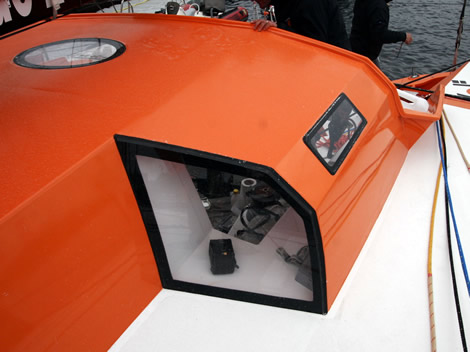
As with Foncia, PRB’s interior also features twin rectangular ducts emerging in the pit area of the cockpit either side of the single hatchway (rather than the arrangement they had on the Farr design with twin hatches and the pit in between). On PRB they have also gone from five winches down to four in the cockpit – yes, again for weight reasons. “That is the big change now doing all the manoeuvres,” says Pillot.
On Virbac Paprec 3, the extension of the doghouse on each side allows standing headroom down below, even for towering Jean-Pierre Dick.
We weren’t allowed to take photos but the nav station is slung beneath the trough between the two pods and can be rotated, while the entire seat arrangement can be tacked from port to starboard. There is a special area between the frames and stringers where Dick can fit a mattress to sleep on.
Virbac Paprec 3 doesn’t have MichDes’ stacking system down below where bags can be hauled around the boat on lines. Instead they have a more belt and braces arrangement with large storage bags that are colour coded red, white and blue (like the French flag), according to whether they are heavy, medium or light in weight, that are manually dragged about the interior. However the interior is more open.
“We worked a lot on all the openings. We can stack the sails forward and backwards very easily with big openings,” says Abiven, who adds that they also worked a lot on centralising weight down below. Thus the engine, with hydraulic manifold for the canting keel, is directly aft of the main bulkhead along with the water maker.”
One of the joys of the IMOCA 60 class is that there is pretty much a book in each boat. However we hope this provides some insight into the trends within the class, the various choices being made by designers and teams even with a rule that at every new iteration becomes less ‘open’.
 |
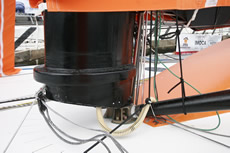 |
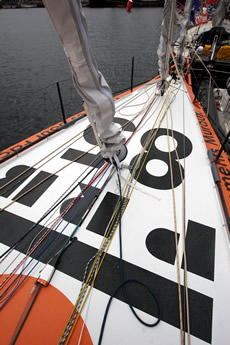 |
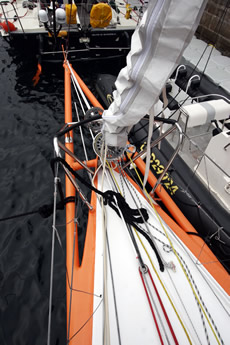 |
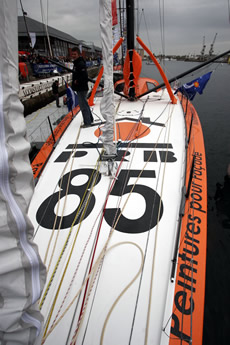 |
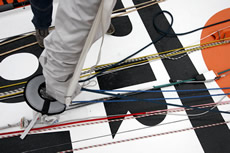 |
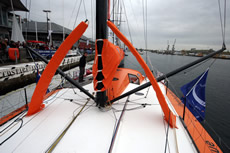 |
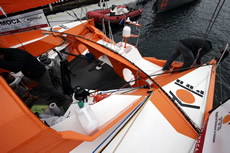 |
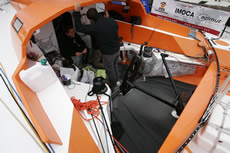 |
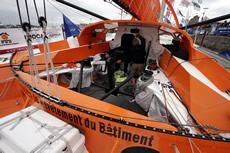 |
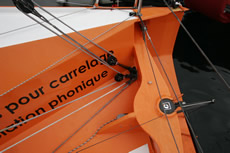 |
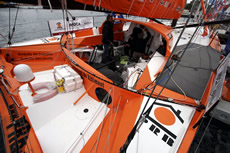 |
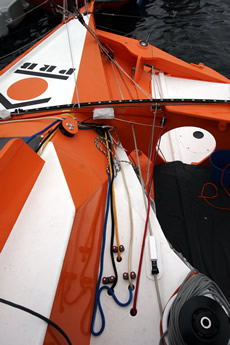 |
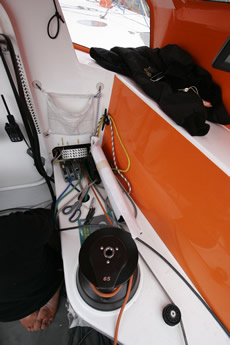 |
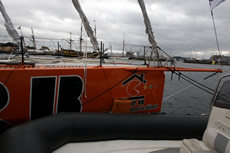 |
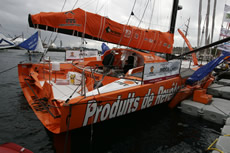 |

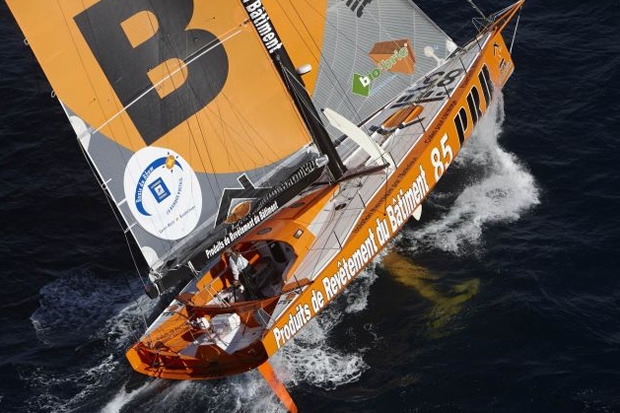









Latest Comments
Add a comment - Members log in